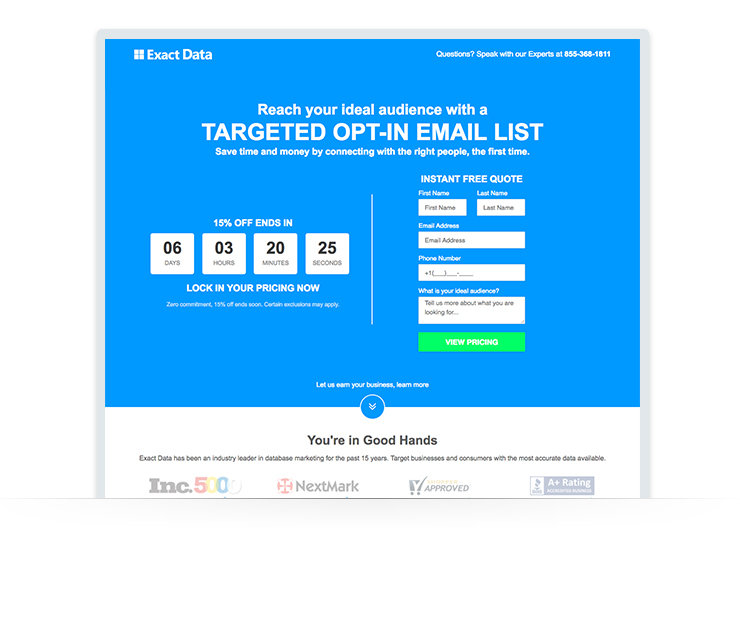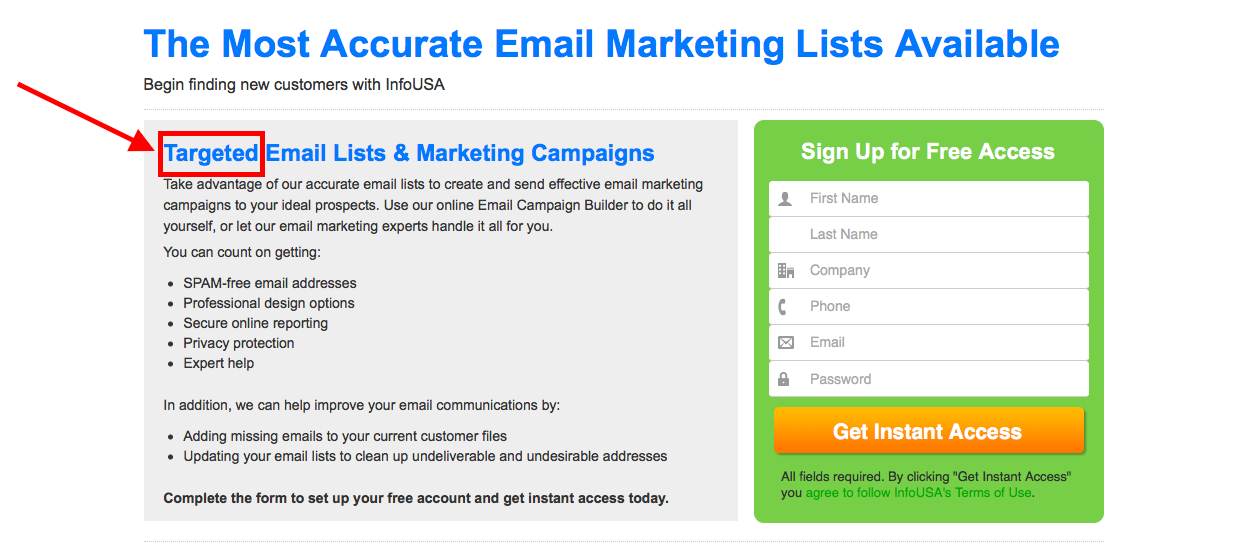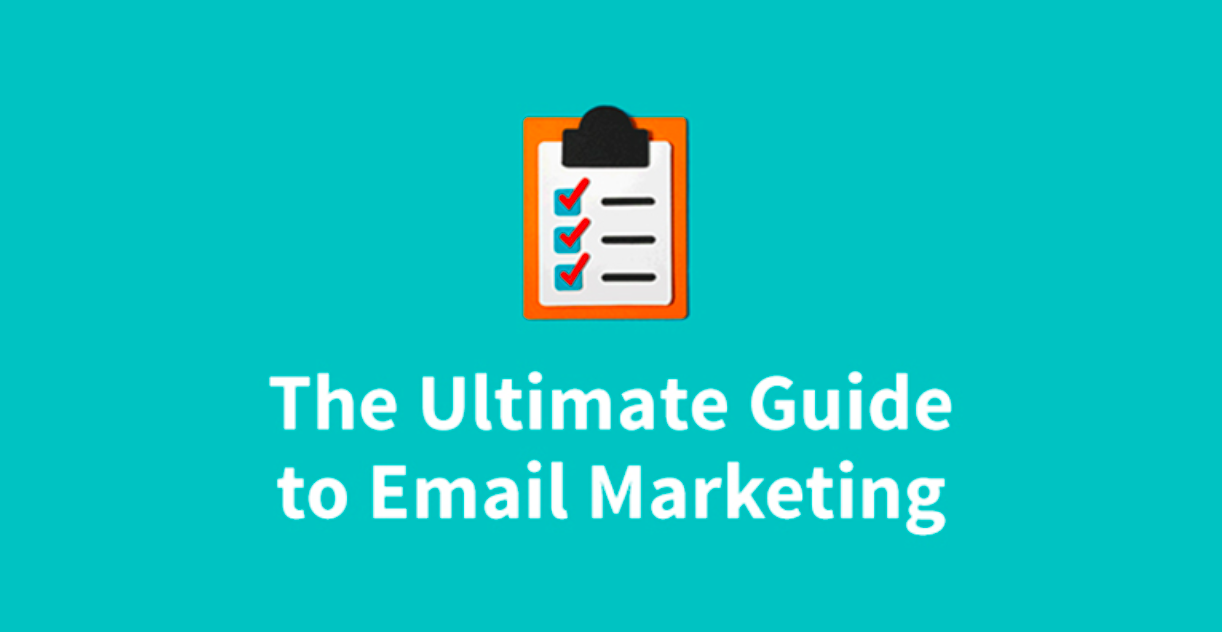The Ugly Truth about Buying Email Lists

Why you should never buy an email list
Our Best Practices team doesn’t only catch bad actors using purchased lists — even well-intentioned businesses can fall into the trap of buying email lists. After all, a purchased list sounds like a great idea in theory: You can start marketing your product or service right away to a list of subscribers, instead of having to grow your list from scratch. Some companies make money by offering new email marketers a “shortcut” to building their email lists. So they compile email address lists and advertise them as:- "Targeted"
- "Opt-in"
- "Verified"
- "Clean" (a clue that purchasing lists is inherently dirty)
- "Real Time"

 When buying a list of email addresses, you don’t have proof of who else may have also purchased those addresses, what list those subscribers signed up for originally, or the date those subscribers signed up. While the company selling the list may say it’s “Opt-In” or “Verified,” you have no idea what content they first signed up for. For instance, your purchased list may claim to have opted-in for your gardening tips. In reality, however, those email addresses signed up for sports news and updates. The result: The subscribers on your purchased list have no interest in your gardening content. They never open your messages, or, worse, they mark your messages as spam. When you send messages to a purchased email list, you don’t have explicit opt-in to be emailing those subscribers. Explicit opt-in — meaning subscribers actively and knowingly gave you permission to email them (i.e. filling out a sign up form on your website) — is required for a quality list, says AWeber’s Best Practices Manager, Josh Smith. “If you don’t have explicit opt-in, you are bound to have problems,” he explains. (You'll need to prove opt-in under the new GDPR law. For more information, check out Your GDPR + Email Marketing Playbook.) And fair warning: Confirmation does not equal permission. The confirmation message is one of the first emails you send to subscribers when they are added to your mailing list. In it, a subscriber can click on a link to confirm that they requested information from you. However, you can’t just send a confirmation message to a purchased list — because they never gave you permission to email them in the first place. They never requested to be on your email list. Confirmation can only be used as a second step in order to build a more engaged list.
When buying a list of email addresses, you don’t have proof of who else may have also purchased those addresses, what list those subscribers signed up for originally, or the date those subscribers signed up. While the company selling the list may say it’s “Opt-In” or “Verified,” you have no idea what content they first signed up for. For instance, your purchased list may claim to have opted-in for your gardening tips. In reality, however, those email addresses signed up for sports news and updates. The result: The subscribers on your purchased list have no interest in your gardening content. They never open your messages, or, worse, they mark your messages as spam. When you send messages to a purchased email list, you don’t have explicit opt-in to be emailing those subscribers. Explicit opt-in — meaning subscribers actively and knowingly gave you permission to email them (i.e. filling out a sign up form on your website) — is required for a quality list, says AWeber’s Best Practices Manager, Josh Smith. “If you don’t have explicit opt-in, you are bound to have problems,” he explains. (You'll need to prove opt-in under the new GDPR law. For more information, check out Your GDPR + Email Marketing Playbook.) And fair warning: Confirmation does not equal permission. The confirmation message is one of the first emails you send to subscribers when they are added to your mailing list. In it, a subscriber can click on a link to confirm that they requested information from you. However, you can’t just send a confirmation message to a purchased list — because they never gave you permission to email them in the first place. They never requested to be on your email list. Confirmation can only be used as a second step in order to build a more engaged list.
The unintended consequences of buying email lists
Most subscribers know if they have requested specific information from you or not. Sending unsolicited information to subscribers who did not request it can be damaging to your business and your deliverability. Internet Service Providers (ISPs) — like Gmail, Hotmail, or Yahoo! — track if a subscriber opens an email, clicks a link, or reports a message as spam in their inbox. If the engagement is good — meaning, a subscriber constantly opens your messages, forwards them, or clicks the links inside — this tells the ISP to route future emails straight to the inbox. However, if a subscriber is unengaged, then an ISP will route your emails to the spam folder. And if a large portion of your subscribers are unengaged — which will most likely with a purchased list — it can hurt your sending reputation. All of your messages may end up in the spam folder whether a subscriber wants to read your emails or not.The CAN-SPAM Act and buying email lists
The CAN-SPAM Act is a United States law that regulates commercial email. While it doesn’t actually prohibit someone from buying and selling email addresses, it does prohibit sending bulk unsolicited emails. And if you’re sending to a purchased email list, that’s exactly what you’re doing. You would be in violation of the law.Grow your list in other ways
There are other great ways to grow your list that don’t involve buying email addresses.- Create a sign up form for your website. You'll see higher engagement and better results since your subscribers signed up for the content themselves.
- No website? Create a hosted sign up form in under 5 minutes flat.
- Offer a lead magnet — or incentive — to entice people to sign up for your list. Here are 22 brilliant lead magnet ideas.
- Turn your social media following into email subscribers. Add your sign up form to your Facebook page and publish the AWeber hosted URL to your sign up form as a Tweet.
- Go from zero subscribers to 50 in less than 30 days by following this super simple tip.
- Enroll in our FREE video course on growing your email list. It takes less than an hour to complete!
 Want to learn more about growing an email list filled with quality and interested email subscribers? Download your free Ultimate Guide to Email Marketing! This post was updated on August 22, 2018.
Want to learn more about growing an email list filled with quality and interested email subscribers? Download your free Ultimate Guide to Email Marketing! This post was updated on August 22, 2018.
The post The Ugly Truth about Buying Email Lists appeared first on Email Marketing Tips.
Contributer : Email Marketing Tips
The Ugly Truth about Buying Email Lists
![The Ugly Truth about Buying Email Lists]() Reviewed by mimisabreena
on
Saturday, August 25, 2018
Rating:
Reviewed by mimisabreena
on
Saturday, August 25, 2018
Rating:
















No comments:
Post a Comment